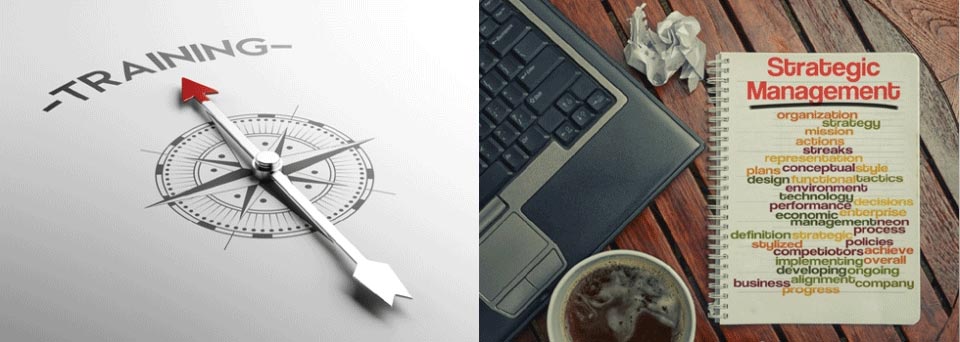Date: 15-May-15:TIE Conference on Sports Entrepreneurship
Venue: Jacaranda Hall, India Habitat Centre
Date: 15/5/15
Attendee: Mr. Aritro Dasgupta
This conference was organized to bring together various stakeholders from the young but vibrant industry known as sports entrepreneurship. While it’s a long in existence industry, the reason it may be termed as young is because it’s been largely unorganized till now and a significant proportion of the sports entrepreneurs are in the sub 35 age category. This write will explore the various sessions held and will highlight the major points discussed in them.
Inaugural Session
This session consisted of 4 panel members. The panel members were as follows:
|
S. No. |
Name |
Designation |
Organization |
Session Role |
|
1 |
Ms. SudhaSastri |
Chairperson- Sports & Fitness |
SIG |
Welcome Remarks |
|
2 |
Mr. Ajit M Sharan |
Secretary- Sports |
Ministry of Youth Affairs & Sports, GoI |
Keynote Address |
|
3 |
Mr. DIlipChenoy |
CEO & MD |
National Skill Development Council |
Special Address |
|
4 |
Mr. Amir Ullah Khan |
Development Economist |
The Indus Entrepreneurs (TIE) |
Vote of Thanks |
SudhaSastri
As the moderator of the session, this speaker got things underway by providing us a brief summary about the panelists. She spoke about the efforts TIE is making in the field of encouraging sports entrepreneurs but yet how much mores till needs to be done. She particularly spoke about the complete lack of female entrepreneurs in this line more than others and this is something where more work needs to be put in.
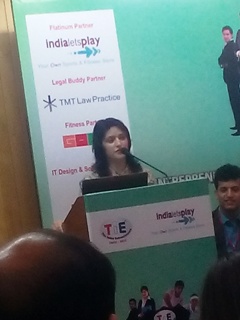
Mr. Ajit M Sharan
This speaker was asked by the session moderator regarding what steps the government is taking to ensure greater opportunities for entrepreneurship in sports. At this Mr. Sharan answered that it is a blessing in disguise that the government is staying away. In fact the most competitive sports entrepreneurship ventures have developed in regions / countries with minimal government interference. The execution part has to be carried out by private players. He also spoke about the need to escape the subsidy culture that has plagued sports entrepreneurship. He feels that a for-profit model will work well in this line along with taking advantage of CSR competencies of corporate houses. Subsidies in sports from government need to reduce as they result in lower rates of accountability.
Mr. Sharan then claimed that in particular schools and colleges need to play a part for society and not just for their respective students. He lamented the fact that schools and colleges get land from the authorities at subsidized rates, including the sports arenas, yet do not allow members of the general public to use their grounds for non-paid sports. He feels that in the evenings i.e. post school hours, the school football field and other sports premises must be open to the public. There is presently a lack of sports facilities which the general public can use mainly due to the congestion at cities.
Finally Mr. Sharan spoke about the difficulties regarding appointing a single nodal agency to solve all informational gaps. He says that this industry has sub components that are so varied in themselves that appointing a central informational agency is next to impossible. As an example, he took the case of floodlights. He says that stadium authorities usually have very little technical information on floodlights, as that part is entirely outsourced to a firm like Phillips for who this is part of core competency.
DilipChenoy
This speaker re-affirmed what was spoken by the previous panelist. Government interference must be only at policy level and in making sure funds are dispersed. The execution must stay within the hands of private players. As an example he cited the football leagues in Europe or the sports leagues in the USA. He then spoke about how the title of this conference is a little misleading, as beyond entrepreneurship, there is a massive scope for salaried employment in this industry of sports management. To just name a few he suggested- analytics, sports nutrition, training youngsters, training sports staff, mobile apps etc.
The speaker then did a play on words by suggesting that the phrase lack of facilities must be replaced by opportunity. Wherever there is a component missing, an opportunity exists for the business world to rectify it. This is where the NSDC comes prominently into the picture. The NSDC will support initiatives and the speaker invited budding entrepreneurs / sports managers to write to write to them regarding new ideas. In case of approval, projects are adopted by NSDC for period of 10 years where 75% financial support is provided to the enterprise. There is a separate fund for research purpose. In addition, grants are provided for setting up business in difficult areas and geographies of work.
While discussing with the audience, the speaker himself proposed an idea. He compared with the book-my-show app and pondered aloud regarding an app to book a sports coach or sports ground. He finally concluded by speaking about some initiatives NSDC has undertaken in the field of sports management. Edu Sports, K-11 Fitness Academy, Tenvic and Edu Strokes were mentioned as few of those.
Amir Ullah Khan
This speaker thanked all the other panelists for their contributions to this inaugural session. He then moved on to some points of his own. He said that money is not the solution here as the entire industry is so unorganized. In case more funds do become available, then the sports industry in India will be confused as to how to make use of that money. There has not been any industry wide study of finances required or spent. In fact there is no scientific basis developed to price tickets at stadiums.
This session was followed by the Networking High Tea.
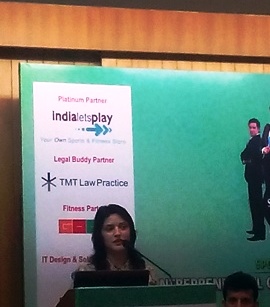
Technical Session 1: Learnings from Across the World
This session consisted of 5 panel members. The panel members were as follows:
|
S. No. |
Name |
Designation |
Organization |
Session Role |
|
1 |
Ms. SudhaSastri |
Chairperson- Sports & Fitness |
SIG |
Session Moderator |
|
2 |
Ben Sakker Kelly |
First Secretary(Education & Science) |
Australian High Commission |
Key Speaker |
|
3 |
Antoine Delcourt |
Counselor- Economic Affairs |
Embassy of Belgium |
Key Speaker |
|
4 |
Javier Ceepi |
Tournament Director |
FIFA U-17 World Cup |
Key Speaker |
|
5 |
Brandon Young |
US Embassy |
Key Speaker |
SudhaSastri
The moderator posed a very relevant question to all the panelists. This being a session with foreign speakers, the focus was on how different is the sports culture in those countries. Whether there was initiative from the government or was there something different in the way people approached sports. These topics were posed by the moderator.
Ben Sakker Kelly
This speaker spoke about how in Australia sport is a way of life. Australia has massive infrastructure and excels in a number of sports. There are thousands of amateur clubs in the country catering to people who are active in some sport or the other. From a young age, kids try their hands (or feet) in a number of sports, thus they develop as athletes. Then at around the age of 14, it is understood which sport suits a particular child best. Even adults who do not turn professional, do participate in sports on weekends. This is helped by Australia’s liberal employment policies which prefer a strong work- life balance.
Mr. Kelly is himself a member of an amateur soccer team that plays in Delhi. He also spoke about the sport of soccer (popularly known worldwide as football) and the challenges the sport in particular throws up. Australia like the USA has a number of sports which are followed but which do not have much following outside. The clear examples would be- cricket, rugby league, rugby union and Aussie rules football. Due to these sports being established the global sport of football lagged behind, but now the A- League has been established and is making inroads as a quality league.
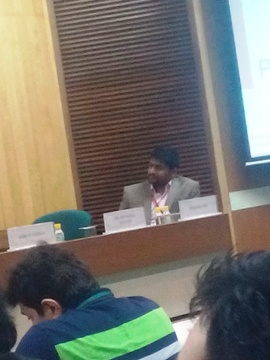
Mr. Kelly then spoke about the challenges faced by Australia in integrating sport with the often marginalized indigenous population. In the mid-2000s there was a major uproar among the aboriginals. Sport was one of the tools which enabled the natives to mix freely with the Caucasian (white) population on a level playing field. This is reflected in the growing numbers of natives playing at top levels of professional sports. In addition to natives, a large number of non-Caucasian/ non- Anglican immigrant populations are also well represented in the major sports. Immigrants from the Indian subcontinent, the Balkans, Africa and Greece have made it to national or professional teams of various sports.
Antoine Delcourt
This speaker being from Belgium spoke about the sporting landscape in the country. Belgium is a tiny country by comparison to India as well as Australia and USA whose representatives were panelists on this session. He spoke about how Belgium has produced top ranked tennis players, cyclists and now boasts one of the strongest football teams in the world. The government has always played a key role being the primary facilitator. But the actual execution and implementation are carried out by private players.
While not really comparing with India, but still Mr. Delcourt did give some key pointers regarding sports administration and the hurdles in India. He spoke about an ISL (Indian Super League) game he watched last year in Kolkata. The ground was full to the brim with supporters yet the facilities were deplorable. In another instance he watched a hockey match in Delhi where the infrastructure was world class, yet the ground was eerily empty. The speaker feels that something needs to be done so that we can take the positives from both these instances.
Brandon Young
Mr. Young represented the USA at the forum. He spoke about the massive sports infrastructure that the USA has and how it all developed. Specifically he eulogized regarding the college programme which provides scholarships to able athletes and trains them during the course of 4 years to become top level professionals. This is unique in the world as everywhere else there are youth leagues which feed the professional level. But due to the college structure, those athletes who miss out due to a number of reasons and cannot bridge the professional gap, have a backup to fall back upon. They do not miss out on an education. Certain universities are particularly well known for sports like Alabama and Duke.
The speaker then went on to speak about the how the Big 4 in particular have a strong grip over the nation’s sporting calendar. By the big 4 he meant the sports leagues- NFL (American Football), NHL (Ice Hockey), NBA (Basketball) and MLB (Major League Baseball). Some of the rivalries in these sports like the New York Yankees- Boston Red Sox in baseball, are part of American folklore. He also specially spoke about the NFL Super Bowl which is financially possibly the biggest single game in the world of sports. Corporates pay up to 15 million US dollars for a 15 second commercial.
Someone from the audience posed a question regarding the position of soccer (football) in USA and whether the MLS can be added to the list as a Big 5. To this question, Mr. Young replied that the other sports have an established history in the USA ranging to well over a hundred years whereas football has only recently made inroads. Thus over a period of time football will catch up and USA will be heard on the world stage of the biggest sport. With the likes of David Beckham, Kaka, Thierry Henry and now Steven Gerrard, Frank Lampard and David Villa turning out for American teams, the days of football glory may not be very far away.
Finally, the speaker also remarked on how professional female sport has risen in development. In football, America has one of the best female national teams while other sports like basketball and lawn tennis have professional structures. Lacrosse is one sport which is dominated by female athletes.
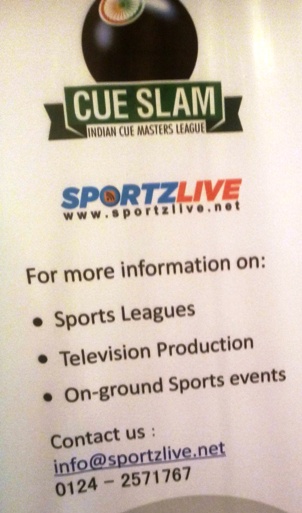
Javier Ceepi
The speaker is in charge of the under- 17 football world cup that India has been awarded to host. This is the first major FIFA mandated tournament that India will be hosting and thus preparations need to be in full swing. The speaker is the FIFA representative in charge. He spoke about how the USA and Australia to mention the panelists, can host a tournament of this magnitude the next day from being informed, such is the sports and related infrastructure available with the country. Due to the size, Belgium may be a little behind, but per capita even that tiny European country has very good facilities compared to India. In India it’s a complete 4 year battle.
He honestly admitted that corruption charges in this country were not untrue. Indeed that was a part of this country. He himself belongs to Chile in South America which is hosting the same next FIFA tournament which India will host subsequently. He tried various means to stop corruption, yet he never had full control. Also due to some of Chile’s negotiations, they lost a key contract in the motorsports world’s premier Paris- Dakar Rally in which traditionally Chile hosts a segment. That has been taken away from them.
Technical Session 2: Grassroots Sports Development
This session consisted of 6 panel members. The panel members were as follows:
|
S. No. |
Name |
Designation |
Organization |
Session Role |
|
1 |
Joy Bhattacharjya |
Project Director |
FIFA UN- 17 World Cup |
Session Moderator |
|
2 |
Jaideep Bhatia |
Partnerships Consultant |
Magic Bus India Foundation |
Key Speaker |
|
3 |
AdityaShamlal |
Partner |
Gamechanger Law Advisors |
Key Speaker |
|
4 |
SujitPanigrahi |
Founder & CEO |
Fitness 365 |
Key Speaker |
|
5 |
Kishore Taid |
Head of Strategy & Operations |
All India Football Federation |
Key Speaker |
|
6 |
PritiSrivastava |
VP- Regulatory Operations |
Reliance Jio |
Key Speaker |
The major points discussed and learning derived from this session were as follows:
$1· The government of India has stipulated strict CSR norms to be followed. This includes 2% of total revenue for companies earning Rs. 10,000 crore or more. While this seems a massive pie, only a certain portion of that will be directed towards sports as there are many other activities that may be clubbed under CSR.
$1· There is a total output of CSR that will be out in to what is known as National Relief Fund. This has been valued at around Rs. 18,000 crore.
$1· Fitness is something that is very much lacking in India. A large proportion of people are either obese or malnourished.
This session was followed up by the Networking Lunch.
Technical Session 3: Startup Showcase
This session consisted of 6 panel members. The panel members were as follows:
|
S. No. |
Name |
Designation |
Organization |
Session Role |
|
1 |
VaibhavTandon |
Research Officer |
Ministry of Youth Affairs & Sports |
Session Moderator |
|
2 |
Porush Jain |
Founder & CEO |
Sportskeeda |
Key Speaker |
|
3 |
Dr. RidwanaSanam |
Founder & MD |
KRV Healthcare and Physiotherapy |
Key Speaker |
|
4 |
DhruvVerma |
Founder & CEO |
Golf Lan |
Key Speaker |
|
5 |
Adnan Adeeb |
Co- founder & MD |
Volano’s Entertainment |
Key Speaker |
|
6 |
SiddharthPandey |
Founder |
LEH LEH Sports |
Key Speaker |
VaibhavTandon
As the moderator of this session this speaker introduced the panelists and then proceeded to begin the session. In the end, he even delivered the vote of thanks and summarized the discussions of the session.
Porush Jain
As the founder of Sportskeeda, his contributions to this sector are immense. Indeed today Sportskeeda has instant recall nationally. The name itself has enormous recall value and the branding has leveraged this fact.
Mr. Jain started by describing the early days and how at their college campus this venture was started using the internet available. The website was hosted on their college computer servers. Initially a group of bloggers were recruited to write honorifically for the website. Eventually the turnaround came in the year 2011 when India was playing a football match in Qatar. For good reason, Google had put up Sportskeeda on top of the feed but while fans had turned the website on, for some reason there was no live commentary. 5 minutes had elapsed and still none if the usual minute-by-minute match report was on and this created massive embarrassment. This is when 1 viewer from Qatar started writing his own live commentary. This created a chain as others joined in writing there. This game proved to be a trendsetter as since then, Sportskeeda has started a live feed system whereby fans provide information to fellow fans. Thus there is a peer-to-peer information flow.
He then spoke about some of the recent achievements. The Indian Ice Hockey team was travelling for some games, but there was limited funding. To raise funds, Sportskeeda started trending this event by developing a hash tag- #SupportIceHockey. Due to the presence on Sportskeeda, this news item got massive online coverage. Within some time the GautamGambhir Foundation donated Rs. 4 lakh for this cause.
Dr. RidwanaSanam
Dr. Sanam started out by speaking about her own life and how she was attracted to this field of physiotherapy. She belongs to an influential business family in Kashmir and could have got for herself a cushy government job. However, instead she chose physiotherapy as a career in Delhi as she feels it’s a life-saving medical art. Physiotherapies annually prevent 35,000 surgeries in her clinics alone. There lots of doctors and hospital chains which clamour for surgeries when physiotherapy can do. This is because surgeries are money spinning as opposed to simple physiotherapy. She was herself scared of blood when she was young and this prompted her to develop a line of medical thinking where blood was less involved and could be executed more naturally.
She then spoke about the field of hydrotherapy which has limited exposure in India. There are very few swimming pools which are hygienically designed for the same. However, those facilities her firm- KRV- has at their centre in Gurgaon and other places. Hydrotherapy is extremely effective in re-aligning slip discs. More of these procedures must be brought in to the field of sports.
DhruvVerma
The speaker spoke about his time in the UK and his interaction with a few youngsters playing golf at a posh club. His first reaction was that the kids must have been really wealthy to afford that. So he posed them a question on how expensive the club membership was. He was shocked to understand that they weren’t members but instead they were on a round (a single game of golf) sharing arrangement with an aggregator which had taken up membership and was sharing rounds with non –members who wanted to be a part of the game. This idea struck with him and he implemented something like this on return to India. He then started his firm with a similar format. He feels there is massive scope for growth of such firms as golf is a growing sport. The sport has a perception of being lazy, expensive to play and not conducive to those seeking fitness. While some of these perceptions are not way off the mark, it is also true that the sport involves tremendous amount of skill and is extremely popular world over including in countries that are not incredibly wealthy.
Adnan Adeeb
The speaker spoke about how his firm has developed what can be termed as a blue ocean strategy which implies that something never tried out before has been implemented successfully. His firm developed what is known as the Devil’s Circuit. This is a sort of an obstacle race where runners need to pass en number of obstacles on their path to the final. He feels that initially when this was proposed, the major opposition came in the form of payments. He wanted a payment module but the others in the planning team suggested that a run on public territory could not be charged. There was opposition from even the townspeople. But the speaker’s team stuck by and finally they launched the obstacle race on a payment basis as decided. The first ever Devil’s Circuit was scheduled to be held in Gurgaon but just a few weeks before the launch the local team got psyched and the venue was thus shifted. At last ditch only Ludhiana agreed. Mr. Adeeb had little idea about Ludhiana and knew no Punjabi. It was difficult to communicate, publicize or advertise. Finally Devil’s Circuit got support from an unlikely source, a Facebook group known as – Tyre-burners. Being quite a wealthy industrial city, Ludhiana prides itself on boasting many expensive cars. This Facebook group had as membership criteria, people who possessed cars worth a minimum of Rs. 20 lakhs. This group supported this cause as it appealed to their ‘macho’ ideology. They won over many more supporters and finally the Ludhiana leg proved to be a grand success. This was then replicated elsewhere in the country.
The speaker then spoke about the event titled –fittest corporate’ where corporates need to race but in categories based on weight, age and gender. This creates a very equitable pool to judge the fittest team. This event and others lined up are just to demonstrate the importance of fitness in the country.
SiddharthPandey
Mr. Pandey borrowed a phrase from Mr. Porush Jain’s remark on how brand recall due to a funky name can work towards one’s advantage. Sportskeeda has been able to leverage this and so has LEH LEH Sports. Though LEH LEH stands for – Learning Excellence Happiness- Listening Empathy Humility-, the accompanying catchy acronym certainly helps.
The speaker described his time at Australia and how the benevolent (by Indian standards) working hours gave him something new to do. Every day he was out of office at 5 pm which is unheard of in India. Thus he had a lot of time with not much specific to do. This is when he saw everywhere in Australia and realized not much was being done in India for sports. Then he developed this model which his firm follows and is a pioneer in India in. The idea is to let people play, they must not be restricted due to lack of facilities. They simply need to sign up. Thus lot of agreements have been built with corporates, schools, colleges, residential areas and now organized sports at amateur level is taking place. He finally even urged Sportskeeda to take up the cause of promoting amateur sports in a way professional sports has been done.
[csblink]

